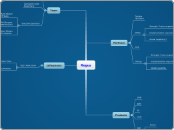von Andy Whyte Vor 10 Jahren
569
Regus

von Andy Whyte Vor 10 Jahren
569

Mehr dazu
PCI compliant ready solution
Functionality and the information necessary to better manage late payments and bad debt
Improved payment matching functionality
Improved invoice template management
Display of multiple currencies on the same invoice and handle multiple currencies for the same country
Easier approach of integrating with global payment gateways
Automated tax calculation and management for multiple countries
Scaleable solution to support subscriptions, promotions and discounts, one-time payment, micro-transactions, post-pay / usage based billing, and prepaid accounts
All data can easily be consumed by other systems
A lack of consistent approach and tracking can lead to poor customer service
Dispute management is a manual process and it is difficult to identify individually disputed items on an invoice
Automatic payments can be taken by credit card only for total amount of each invoice, rather than total account balance
Customer cannot easily access additional invoice detail without Regus team member's assistance
Customers pay incorrect amounts due to poor visibility of account balances
Dependency on Regus 3rd party resources to notify customer of outstanding or past-due balances
Limited payment rules engine to allow for auto-matching of payment to open invoices based on various data provided by customers
Ability to manage promotions for a customer to be applied to charges, and charges to be rerated as needed and displayed pre-and post-invoicing with new rate
Customers have an inconsistent user experience as there is no single self-service portal to easily view pending charges, invoices, make payments etc
Managing products and services in multiple currencies within one country is not possible today
Complex tax structures for the 100+ countries that Regus operate in require significant administration
Invoice templates to accomodate legal requirements & paper formatting restrictions across 100+ countries is labour intensive when changes are required
The consumption information recorded and entered manually in some cases, and where the consumption information is captured automatically , this is not consistent globally
Customer confusion regarding payment terms when they roam to other centres
Track and manage individual offers/vouchers
Integrated solution with the sales and customer management building block
Ability to manage pricing and promotions across channels
Ability to monitor effectivness of promotional campaigns
Manage pricing and promotions of products and packages and improve product revenue and share
All data easily exposed to be consumed by other systems
No local analysis is done to determine if a location should be closed, or a service discontinued due to poor performance
Limited ability to drive customers to specific regions or channels through promotions or discounts
Limited central control over margin management and yield management
Lack of rich competitive pricing info for each region
Pricing data is managed through spread sheets
Sales and discounting process driven at centre or country level
Analyse the lcoations and inventory they have in order to make decision on reconfiguring locations, closing locations and understanding more about what is important to customers in those locations
Easily add new locations to systems
Make the process of finding suitable locations less manual for customers
Expand the range of locations available to customers, as adding new types of locations will be simple and easier to manage
Automate facilities management to support operations in unmanned locations
All data can be easily exposed to be consumed by other systems
Inability to manage multiple naming conventions for rentable assets
Limited visibility of other rentable items not made up of physical space (e.g. projectors / whiteboards)
Inventory types are limited in today's systems; creation of new inventory types require development prior to market launch
Not all of the necessary information is collected about all location types, and there is limited differentiation between location types
No master source of data results in disparate and unclear representation of location information
Mat Newton: Head of enterprise systems
Monica Holley: Regus 2.0 Programme lead
Financial and systems manager:Gareth Seale
Mike Lunt STC ERP Director
Possibly not delivering with CRM project
Fusion expertise
Reactive marketing to performance
Close under performing workplaces
Expand
Drive out successful campaigns/strategies
New Centres
SSO
My.Regus
Out of office
Printing
Invoices
Booking
Not spaghetti junction
Regus IT able to adopt
Economy of scale
Lower cost per workstation
Rapid.Regus
Cloud enabled